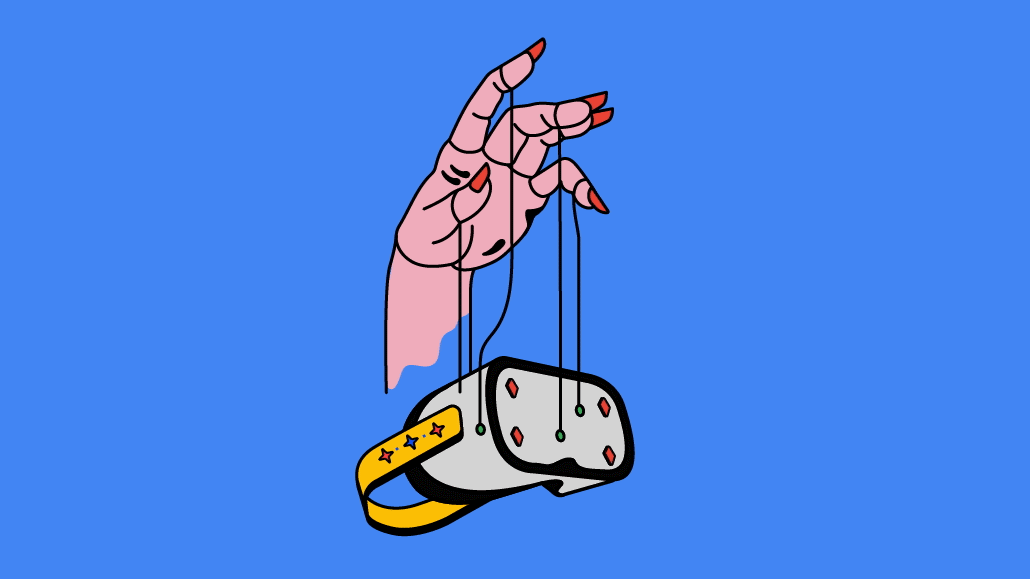Why Clarks enlisted influencers to bring users into its metaverse experience

Brands are increasingly spending their gaming marketing budgets to build immersive activations inside metaverse platforms such as Roblox and Fortnite.
But although these platforms can deliver tremendous traffic and engagement, actually getting those users to spend time inside branded experiences is a challenge unto itself. To generate interest in their virtual activations, brands are increasingly working with influencers across the gaming community and beyond.
Influencers formed a key part of the marketing strategy behind the “CICAVERSE,” a Roblox world built by the British shoe brand Clarks. The branded space, which launched on May 16, includes a digital Olympic stadium, Roblox-ized Clarks Cica sneakers (the namesake of the experience) and a scavenger hunt mini-game that awards winners limited-edition virtual Roblox items — and, for the first 100 winners, real-life prizes.
“To be able to have an experience in Roblox that has a real-world extension, and excitement and energy around that — that is something that we really like to dig into,” said Josh Neuman, president of MELON, the metaverse development studio that designed the experience for Clarks.
To further encourage Roblox users to enter their branded world, Clarks brought in three Gen Z and Generation Alpha athlete–influencers — breakdancing 15-year-old B-Girl Terra, 16-year-old Parkour practitioner Robbie Griffith and Connor Stitt, an 11-year-old BMX rider — to promote the experience across their social feeds.
The Roblox space was built with these influencers in mind, featuring mini-games based on their passions and interactive Roblox characters modeled after each influencer.
“The importance of the youth athletes extends well beyond their roles in the Roblox game,” said Clarks CMO Tara McRae. “We began working with them over a year ago and they had a huge impact on the actual design of our Cica shoes.”
In addition to the Gen Z athletes, Clarks gave sneak previews of the space to native Roblox influencers — streamers who spend most of their time inside the platform — and MELON dropped hints among its network of Roblox influencers as well. MELON also intentionally shaped the experience to start conversations among influencers, in part by making the scavenger hunt into a genuine head-scratcher.
The challenge prompted Roblox users and YouTubers to make their own independent guides for the experience, much like they would for a non-branded Roblox game: a YouTube search for “CICAVERSE” reveals over a dozen videos with thousands of collective views, all posted at some point during the past week.
“It even got to the point where we were working in real-time with Clarks, and we hadn’t planned on releasing the first clue for 24 hours — but there was such attention within a couple [of] hours after launching that we contacted their head of social media and had him release the first clue early,” said MELON svp of partnerships and operations Heather Healy. “We also had to start putting little hints on the Clarks homepage, because everybody was talking about it.”
This multifaceted influencer strategy was effective at generating interest in Clarks’ Roblox space: in the week since its launch, the experience has been visited by over 1.5 million users, with an average of 1,000 active users in the space, according to figures provided by Clarks. It’s far from the first Roblox activation to succeed by enlisting influencers: to promote Nike’s “NIKELAND” experience, for example, media company Studio71 worked with the prominent Roblox YouTuber Kindly Keyin to promote the space across his social channels and create sponsored content inside it. “As we partner with brands and help pair them with the right talent, it really is all about promoting discovery of their metaverse experiences,” said Studio71 co-CEO Adam Boorstin. “That is, to us, a key value that our talent can provide brands, vis-à-vis the metaverse space. They have massive audiences; they’re talking to a lot of fans in a very specific community.”
As more brands dip their toes into the metaverse, they risk burning users out on branded experiences that are more akin to interactive commercials than games. Proper gamification is one way to circumvent this, with the most well-designed experiences inspiring community conversations and content in their own right. Fine-tuned and authentic influencer partnerships form another important part of the puzzle.
Traffic inside the CICAVERSE is already healthy — it took less than a week to hit one million visitors, according to numbers provided by Clarks — but the shoe brand is ready to jump into the metaverse with both feet. Moving forward, Clarks plans to continue adding new content to its Roblox world, building on the bridgehead it secured with the help of influencers both inside and outside of the Roblox community.
“In the coming months, we’ll be maintaining a drumbeat of interest in the game,” McRae said, “as we roll out exclusive opportunities and challenges.”
More in Marketing

The Disney-OpenAI deal and generative AI copyright concerns
This week’s Digiday Podcast delves into the copyright concerns and potential trademark issues surrounding brands’ use of generative AI tools, with Davis Wright Tremaine partner Rob Driscoll.

‘There’s tremendous opportunity’: NBA sponsorships lead on European expansion
David Brody, vp, global partner management group lead at the NBA, explains its pitch to sponsor brands and how expansion isn’t far off.

New partnerships, marketing fuel BNPL’s holiday surge
This holiday season, more brands deployed BNPL services with different payment options beyond the more familiar “pay-in-four” structure.








